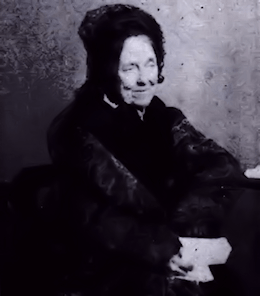Textus Receptus Bibles
Julia E. Smith Translation 1876
| 6:1 | There is evil which I saw under the sun, and it is much upon man: |
| 6:2 | A man which God will give to him wealth and riches and honor, and wanting not to his soul from all which he shall desire, and God will not permit him to eat from it, for a man, a stranger shall eat it. This is vanity and it is an evil disease. |
| 6:3 | If a man shall beget a hundred, and live many years, and a multitude shall be the days of his years, and his soul shall not be satisfied from good, and also there was no burial to him; I said, Good above him an abortion. |
| 6:4 | For in vanity he came, and in darkness he will go away, and his name shall be covered with darkness. |
| 6:5 | Also he saw not the sun, and he knew not rest to this above this. |
| 6:6 | And although he lived a thousand years twice, and he saw not good. Did not all go to one place? |
| 6:7 | All the labor of man for his mouth, and also the soul shall not be filled. |
| 6:8 | For what will remain to the wise one more than the foolish one? what to the poor that shall know to go before the living |
| 6:9 | Good the sight of the eyes above the going of the soul. Also this is vanity and striving of spirit |
| 6:10 | What was, its name was called already, and it was known that it is man: and he shall not be able to contend with the powerful above him. |
| 6:11 | For there is many words increasing vanity, what shall remain to man? |
| 6:12 | For who shall know what is for man in life, the number of the days of the life of his vanity, and he will make them as a shadow? for who shall announce to man what shall be after him under the sun? |

Julia E. Smith Translation 1876
The Julia Evelina Smith Parker Translation is considered the first complete translation of the Bible into English by a woman. The Bible was titled The Holy Bible: Containing the Old and New Testaments; Translated Literally from the Original Tongues, and was published in 1876.
Julia Smith, of Glastonbury, Connecticut had a working knowledge of Latin, Greek and Hebrew. Her father had been a Congregationalist minister before he became a lawyer. Having read the Bible in its original languages, she set about creating her own translation, which she completed in 1855, after a number of drafts. The work is a strictly literal rendering, always translating a Greek or Hebrew word with the same word wherever possible. Smith accomplished this work on her own in the span of eight years (1847 to 1855). She had sought out no help in the venture, even writing, "I do not see that anybody can know more about it than I do." Smith's insistence on complete literalness, plus an effort to translate each original word with the same English word, combined with an odd notion of Hebrew tenses (often translating the Hebrew imperfect tense with the English future) results in a translation that is mechanical and often nonsensical. However, such a translation if overly literal might be valuable to consult in checking the meaning of some individual verse. One notable feature of this translation was the prominent use of the Divine Name, Jehovah, throughout the Old Testament of this Bible version.
In 1876, at 84 years of age some 21 years after completing her work, she finally sought publication. The publication costs ($4,000) were personally funded by Julia and her sister Abby Smith. The 1,000 copies printed were offered for $2.50 each, but her household auction in 1884 sold about 50 remaining copies.
The translation fell into obscurity as it was for the most part too literal and lacked any flow. For example, Jer. 22:23 was given as follows: "Thou dwelling in Lebanon, building as nest in the cedars, how being compassionated in pangs coming to thee the pain as in her bringing forth." However, the translation was the only Contemporary English translation out of the original languages available to English readers until the publication of The British Revised Version in 1881-1894.(The New testament was published in 1881, the Old in 1884, and the Apocrypha in 1894.) This makes it an invaluable Bible for its period.